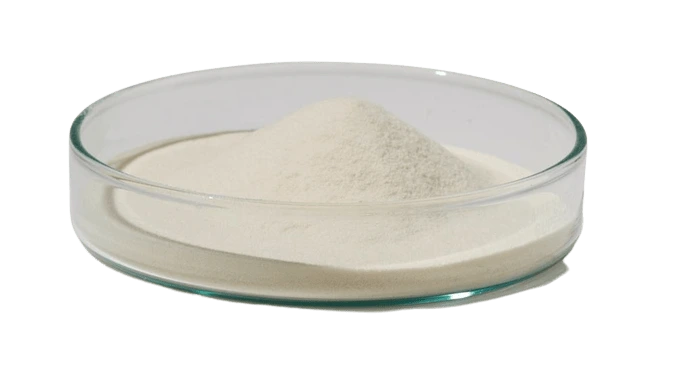Introduction
Agar, a vital ingredient in scientific research, plays a crucial role in solidifying laboratory media. Achieving the right agar concentration is pivotal for successful experiments & precise outcomes. This blog post delves into the importance of agar concentration & provides valuable insights on optimizing experiments by fine-tuning agar concentration. We’ll explore a simple step-by-step approach, using an analogy to adjusting gelatin in a recipe, to make the concept easily understandable & applicable.

Section 1: Shedding Light on the Significance of Agar Concentration
Understanding how agar concentration influences gel solidity & strength is essential. Insufficient agar concentration leads to soft gels, making handling & sample transfer challenging. Conversely, excessive concentration hampers nutrient diffusion & microbial growth. While nutrient agar typically requires 1.5-2.0% concentration & potato dextrose agar ranges from 2.5-3.5%, it’s important to consider specific formulations & manufacturer guidelines for precise results.

Section 2: A Step-by-Step Approach
We’ll adopt an analogy from adjusting gelatin in a recipe to simplify the process of adjusting agar concentration. Similar to achieving the desired firmness in a fruit jelly, tweaking agar concentration in laboratory media ensures optimal outcomes. This section presents a straightforward step-by-step approach to streamline the process.

Section 3: Calculating the Optimal Agar Amount
Calculating the necessary agar amount for the desired concentration is crucial. For instance, assuming a recipe calls for 2 teaspoons of gelatin for firmness and you aim to prepare 500 ml of jelly, converting gelatin to agar is necessary. In this simplified analogy, where 1 teaspoon of gelatin equals 1 gram of agar, adding 3 grams of agar to your 500 ml of jelly is required.
Calculating Agar Amount for Desired Concentration: A Step-by-Step Manner
The typical range for nutrient agar is around 1.5-2.0% agar, while potato dextrose agar is usually around 2.5-3.5% agar. These values can vary depending on the specific formulation and manufacturer’s instructions.
Calculate the amount of agar needed based on the desired final concentration. Let’s assume you want to prepare 500 ml of media and the recommended agar concentration for your medium is 2.0%. To calculate the amount of agar needed:
| “Agar needed (in grams) = Volume of media (in litres) × Agar concentration (as a decimal)” |
|---|
In this case, the calculation would be:
Agar needed = 0.5 L × 0.02 = 0.01 kg = 10 grams
So, you would need to add 10 grams of agar to your 500 ml media to achieve a 2.0% agar concentration.
Example 1: Nutrient Agar
Let’s say you want to prepare 1 litre of nutrient agar and the recommended agar concentration is 1.5%. To calculate the amount of agar needed:
“Agar needed (in grams) = Volume of media (in litres) × Agar concentration (as a decimal)”
Agar needed = 1 L × 0.015 = 0.015 kg = 15 grams
So, you would need to add 15 grams of agar to your 1 litre of nutrient agar to achieve a 1.5% agar concentration.
Example 2: Potato Dextrose Agar
Assume you want to prepare 250 ml of potato dextrose agar, and the recommended agar concentration is 3.0%. To calculate the amount of agar needed:
Agar needed = 0.25 L × 0.03 = 0.0075 kg = 7.5 grams
To achieve a 3.0% agar concentration in your 250 ml of potato dextrose agar, you would need to add 7.5 grams of agar.
“Calculating Recommended Agar Concentration for 1000 ml of PDA”
Suppose, If you want to prepare 1000 ml of potato dextrose agar (PDA), and the recommended amount of agar for this volume is 15 grams. Let’s calculate the recommended agar concentration based on this information.
| “Using the formula: Agar concentration (as a decimal) = Agar amount (in grams) / Volume of media (in litres)” |
|---|
For this considered example:
Agar concentration = 15 grams / 1 litre = 0.015 (or 1.5% as a percentage)
Hence, to achieve the recommended agar concentration for your 1000 ml of PDA, One would need to add 15 grams of agar, resulting in a concentration of 1.5%.
Please keep in mind that these are general tips, and the specific agar concentration & instructions may vary depending on the manufacturer and the intended purpose of your agar medium. It’s always recommended to consult the specific instructions provided by the manufacturer of your agar product for accurate & reliable results.

Section 4: Implementing the Calculation
Adapting the calculation to your specific agar medium is vital. Always consult the manufacturer’s instructions & formulations for accurate & reliable outcomes. By following this step-by-step approach and considering the recommended agar concentration, you’ll achieve the desired gel strength in your laboratory experiments.

Conclusion
Attaining precise agar concentration is pivotal for successful experiments in microbiology and molecular biology. Understanding the significance of agar concentration, following the step-by-step approach, and drawing inspiration from adjusting gelatin in a recipe, will enhance the reproducibility & accuracy of your results. Just as adjusting gelatin ensures the desired firmness in a fruit jelly, optimizing agar concentration in laboratory media allows for optimal gel formation. Remember to refer to the manufacturer’s instructions & formulations to ensure accurate & reliable outcomes in your experiments.

FAQs
Q: What is the optimal agar concentration for bacterial cultures?
A: The optimal agar concentration for bacterial cultures typically ranges from 1.5% to 2%. However, it may vary depending on the specific bacterial strain and experimental requirements. It is important to consult literature & experienced researchers for guidance on the appropriate agar concentration for your specific bacterial culture.
Q: Can agar plates be reused?
A: While it is technically possible to reuse agar plates, it is generally not recommended due to the risk of contamination. Agar plates can easily become contaminated with microorganisms, compromising the integrity of subsequent experiments. It is best practice to use fresh agar plates for each experiment to ensure reliable & uncontaminated results.
Q: Why is agar preferred over other solidifying agents?
A: Agar is preferred over other solidifying agents due to its unique properties. Agar remains solid at a wide range of temperatures, making it suitable for various laboratory applications. It also has excellent transparency, allowing for easy observation of microbial growth without disturbing the culture. Additionally, agar is derived from natural sources, making it safe & biologically inert.
Q: Can the agar concentration be adjusted for different types of cells?
A: Yes, the agar concentration can be adjusted based on the specific requirements of different cell types. Different cell lines may have varying sensitivities to agar concentration, and optimizing the concentration ensures proper growth conditions. It is recommended to conduct preliminary experiments & consult scientific literature to determine the appropriate agar concentration for specific cell lines.
Q: How long can agar plates be stored?
A: Agar plates can typically be stored for several weeks if properly sealed & refrigerated. However, it is recommended to use them as soon as possible for optimal results. Prolonged storage can increase the risk of contamination or deterioration of the agar surface, affecting the growth of microorganisms. It is good laboratory practice to regularly check the condition of stored agar plates & discard any plates showing signs of degradation or contamination.


-min.webp)
